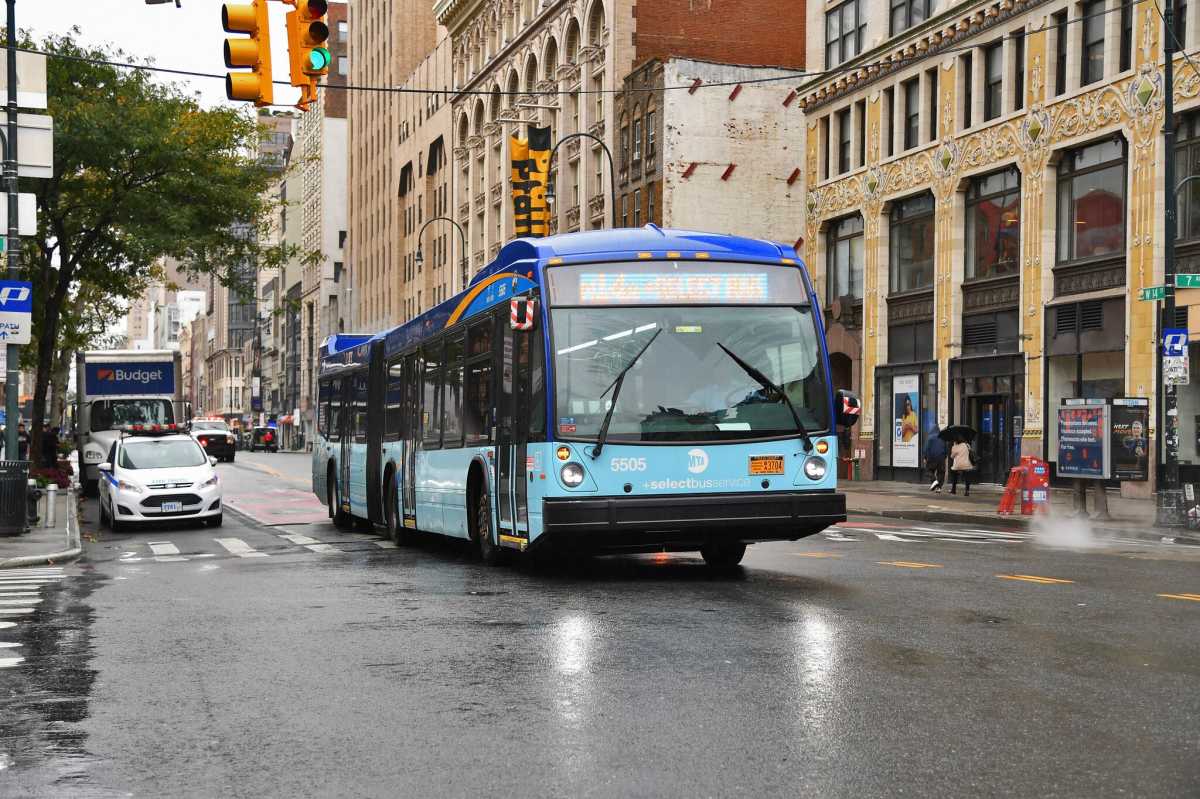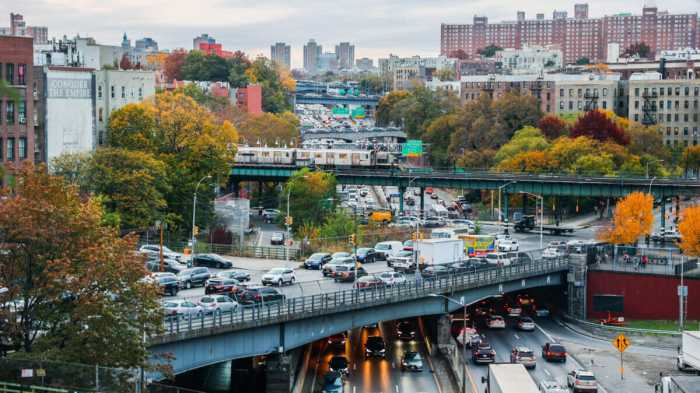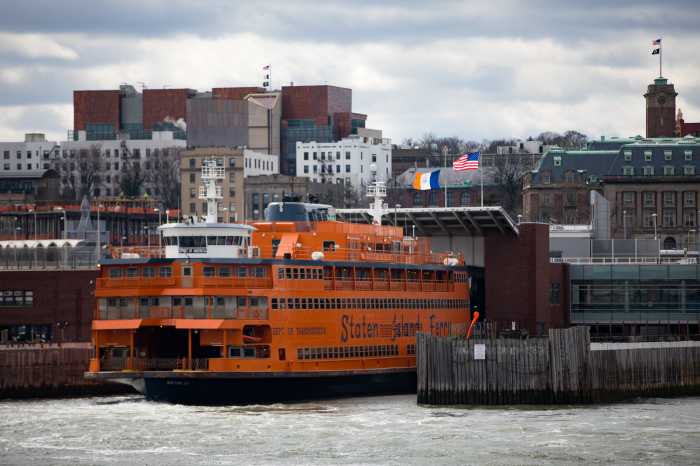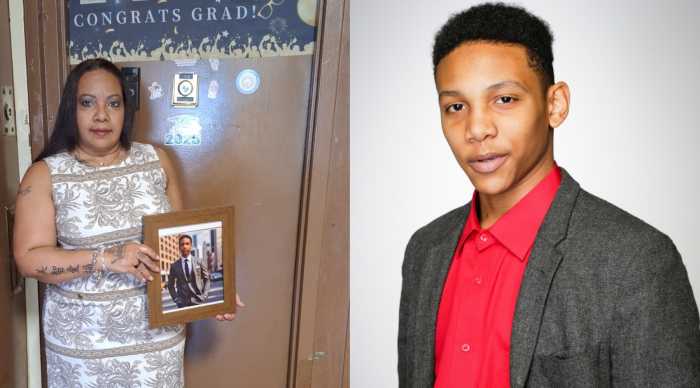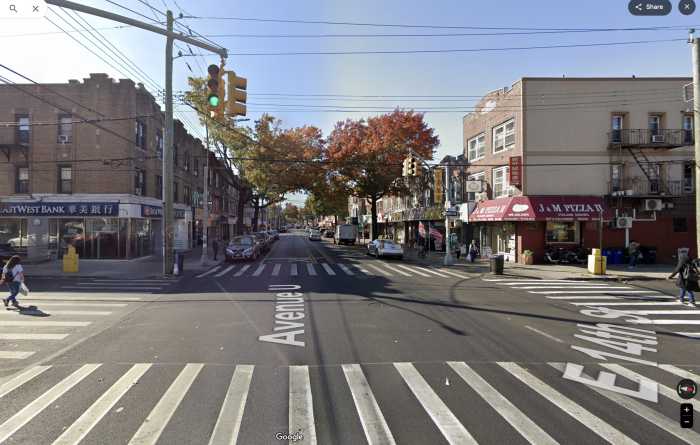New York City buses are running at their slowest speeds since 2019, and have been steadily declining since the onset of the COVID-19 pandemic, according to an analysis of MTA data by amNewYork Metro.
Buses run by the MTA traversed Big Apple streets at an average of 8.18 miles per hour in the first 10 months of 2023, down from 8.21 mph last year and 8.3 mph the year before. At the height of the COVID-19 pandemic in 2020, buses ran at an average of 8.56 mph, but roads were far less crowded as millions of New Yorkers went into lockdown.
The last time buses were slower than this year was in 2019, when they ran at just 8.06 mph. Buses are running slower today than they were in 2015, according to the data.
Buses run the fastest in Staten Island, where they’ve hit a comparatively zippy average pace of 14.28 mph this year. The slowest buses are found in Manhattan, where buses putter along at a paltry 6.28 mph on average.
Average bus speeds clock in at 9.08 mph in Queens, 7.81 mph in the Bronx, and 7.29 mph in Brooklyn. Bus speeds appear to decline as population density increases.
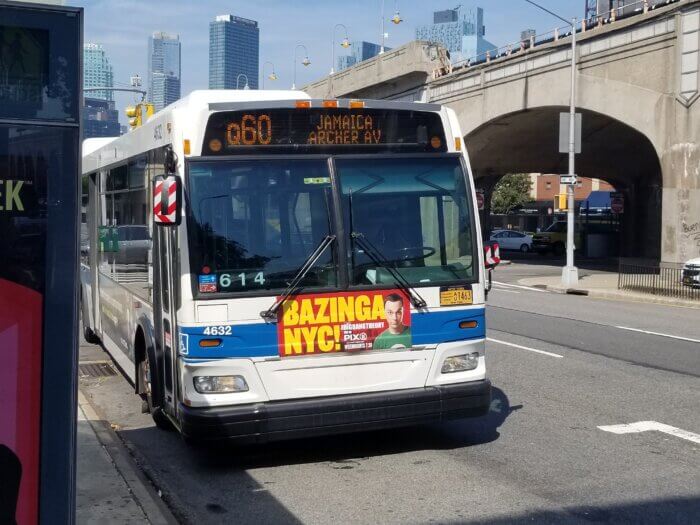
New York’s buses, which stop frequently and are constantly caught in traffic, are the slowest of any major American city. Bus riders consistently cite long wait and travel times as their biggest peeves in the MTA’s monthly rider surveys, while subway riders are more likely to cite safety concerns.
The MTA has undertaken a number of ambitious projects to try to speed up its buses. The agency completed a long-simmering redesign of the Bronx’s bus route network last year, having redesigned Staten Island’s express bus network before the pandemic, while proposals in Queens and Brooklyn are in the works.
The reimagined bus networks are intended to modernize a network largely based on century-old trolley routes, with more widely-spaced stops, fewer overlapping routes, and better connections to other modes of transit, all of which would hopefully speed up the MTA’s plodding jitneys.
The data shows that bus speeds in the Bronx have improved since the redesign, which axed more than 250 stops, but only slightly. Buses in the Bronx ran at an average of 7.83 mph in the first six months of this year, up 2% from the 7.68 mph seen in the first half of 2022, before the redesign took effect.
The MTA has also put automated bus lane enforcement (ABLE) cameras on 21 bus routes across the city, which can automatically issue $50 tickets to vehicles blocking bus lanes, and intends to outfit more routes with the technology. The MTA has also supported installing more dedicated bus lanes across the city as a means of speeding up travel times.
“The MTA is redesigning bus networks in every borough to speed up service, and results in the Bronx and Staten Island show that process is working,” said MTA spokesperson Aaron Donovan. “Where bus lanes or busways opened speeds improved, and when camera enforcement was added, speeds got even faster, with Queens and Brooklyn network redesigns coming next.”
The city is required by law to build 30 miles of new bus lanes each year through 2026, but last year the Adams administration fell short by a considerable margin, and it appears on track to do the same again this year, according to a tracker of bus lane projects by the Riders Alliance.
Mayor Eric Adams came into office promising to be the “Bus Mayor,” but nearly two years into his term, multiple marquee bus projects are stalled, angering transit advocates.

In the Bronx, the administration backed off a plan to build a busway — a road where buses have exclusive domain — on Fordham Road, which advocates hoped would speed up the borough’s busiest route, the Bx12. The about-face came after opposition to the move by local pols and businesses.
“After repeatedly delaying or blocking City projects to speed up buses, Mayor Adams owns this bad news fair and square,” said Danny Pearlstein, spokesperson for the Riders Alliance. “The mayor promised millions of bus riders much faster service but has yet to deliver the improvements we need and deserve.”
A spokesperson for the mayor noted that the 2020 numbers were driven by the decrease in traffic related to the pandemic, but said that “the administration continues to do everything we can to meet the ambitious goals that the mayor laid out in his campaign.”
At the height of the pandemic in 2020, when bus speeds rose, the MTA nixed fare collection and allowed boarding through the back door on local buses to protect bus operators from the coronavirus. Transit employees were some of the hardest-hit essential workers in the city, with dozens losing their lives to the virus.
Fare collection resumed and back-door boarding ceased in a matter of months, after lockdowns ended and the city began the long road to recovery. The MTA is currently piloting fare-free service on five routes, one in each borough, for up to a year to test its impact on speed, service, and ridership. Despite calls from transit advocates, the MTA has not signaled a desire to bring back all-door boarding, citing high levels of fare evasion on buses.
This story was updated with a comment from the MTA and the mayor’s office.
Read more: Man dies after being struck by two hit-and-run drivers



